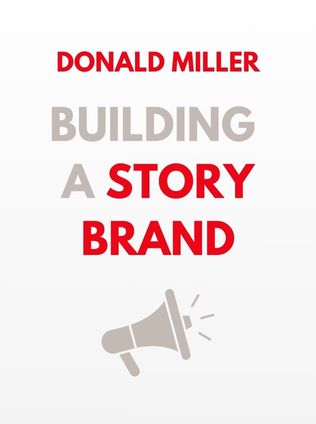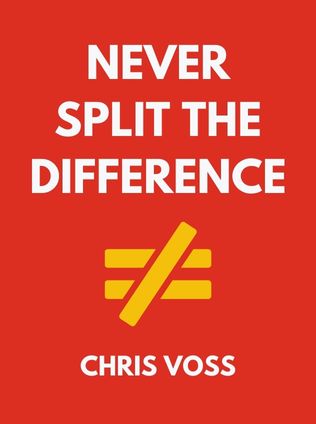
Building a StoryBrand
Clarify Your Message So Customers Will Listen
By Donald Miller
Published 10/2017
About the Author
Donald Miller is the CEO of StoryBrand, a company that specializes in helping businesses clarify their marketing messages. Over the course of his career, he has aided more than 3,000 businesses in refining their communication strategies, leading to significant growth and customer engagement. In addition to his work with StoryBrand, Miller cohosts the popular Building a StoryBrand Podcast. He is also a prolific author, known for his best-selling books Blue Like Jazz and A Million Miles in a Thousand Years.
Main Idea
In Building a StoryBrand: Clarify Your Message So Customers Will Listen, Donald Miller introduces a revolutionary approach to marketing that emphasizes the power of storytelling. By employing the StoryBrand Framework, businesses can create clear, compelling messages that resonate with their audience. This method is centered on seven universal story points that engage customers on a deeper level, helping them see the benefits of a product or service. Miller argues that by positioning the customer as the hero and the brand as the guide, companies can dramatically improve their marketing outcomes and foster stronger customer connections.
Table of Contents
- Introduction: The Power of Story
- Part I: Why Most Marketing Is a Money Pit
- The Key to Being Seen, Heard, and Understood
- Part II: Building Your StoryBrand
- A Character
- Has a Problem
- And Meets a Guide
- Who Gives Them a Plan
- And Calls Them to Action
- That Helps Them Avoid Failure
- And Ends in a Success
- Part III: Implementing Your StoryBrand BrandScript
- Building a Better Website
- Using StoryBrand to Transform Company Culture
Introduction: The Power of Story
Miller opens the book by emphasizing the crucial role storytelling plays in human communication. Stories are how we make sense of the world; they help us understand our experiences and connect with others. He argues that businesses often struggle with their marketing because they fail to present their messages in a compelling, story-driven format. Instead, they bombard potential customers with confusing, unstructured information, which leads to disengagement and lost sales.
“Pretty websites don’t sell things. Words sell things. And if we haven’t clarified our message, our customers won’t listen.” - Donald Miller
Part I: Why Most Marketing Is a Money Pit
The Key to Being Seen, Heard, and Understood
Miller discusses how many businesses waste enormous amounts of money on ineffective marketing strategies. The primary issue is that they fail to communicate their message clearly. He introduces the idea that the human brain is wired for survival and that any marketing effort must address this fundamental need. Brands must focus on how their products and services help customers survive and thrive. This involves addressing physical, emotional, relational, or spiritual needs.
“All great stories are about survival—either physical, emotional, relational, or spiritual.” - Donald Miller
Another critical point Miller makes is the importance of simplicity. He explains that when customers have to work too hard to understand a message, they tune it out. By organizing information into a coherent story, brands can make their messages easier to digest, thereby engaging customers more effectively.
Part II: Building Your StoryBrand
In this section, Miller dives into the StoryBrand Framework, outlining the seven essential elements of a compelling story and explaining how brands can use these elements to craft their marketing messages.
A Character
Every story begins with a hero who wants something. In the context of marketing, the hero is the customer, not the brand. Businesses must clearly define what their customers want and position their products or services as the means to achieve that desire. This opens a "story gap" that invites the customer to engage with the brand.
“As soon as you define something your customer wants, you posit a story question in the mind of the customer: ‘Can this brand really help me get what I want?’” - Donald Miller
- A university might define their customer’s desire as a “hassle-free MBA you can complete after work.”
- A caterer in Los Angeles might offer a “mobile fine-dining experience in the environment of your choice.”
Has a Problem
Next, Miller explains that to maintain the customer's interest, brands must identify and articulate the problems their customers face. These problems should be divided into three levels:
- External Problems: The tangible issues that customers need to solve (e.g., needing a new car).
- Internal Problems: The frustrations or emotions caused by the external problem (e.g., wanting to be an early adopter of new technology).
- Philosophical Problems: The broader, ethical, or moral reasons why the problem matters (e.g., wanting to help save the environment).
“People buy solutions to internal problems.” - Donald Miller
And Meets a Guide
In every great story, the hero meets a guide who helps them navigate their challenges. In marketing, the brand must position itself as this guide, showing empathy and authority to gain the customer’s trust. Customers are not looking for another hero; they need someone who understands their struggles and can offer reliable solutions.
Sign up for FREE and get access to 1,400+ books summaries.
You May Also Like
How To Win Friends and Influence People
The All-Time Classic Manual Of People Skills
By Dale CarnegieQuiet: The Power of Introverts
The Power of Introverts in a World That Can't Stop Talking
By Susan CainThe Lean Startup
How Today's Entrepreneurs Use Continuous Innovation to Create Radically Successful Businesses
By Eric RiesThe Ride of a Lifetime
Lessons Learned from 15 Years as CEO of the Walt Disney Company
By Robert IgerAtlas of the Heart
Mapping Meaningful Connection and the Language of Human Experience
By Brené BrownThe Hard Thing About Hard Things
Building a Business When There Are No Easy Answers
By Ben Horowitz



















